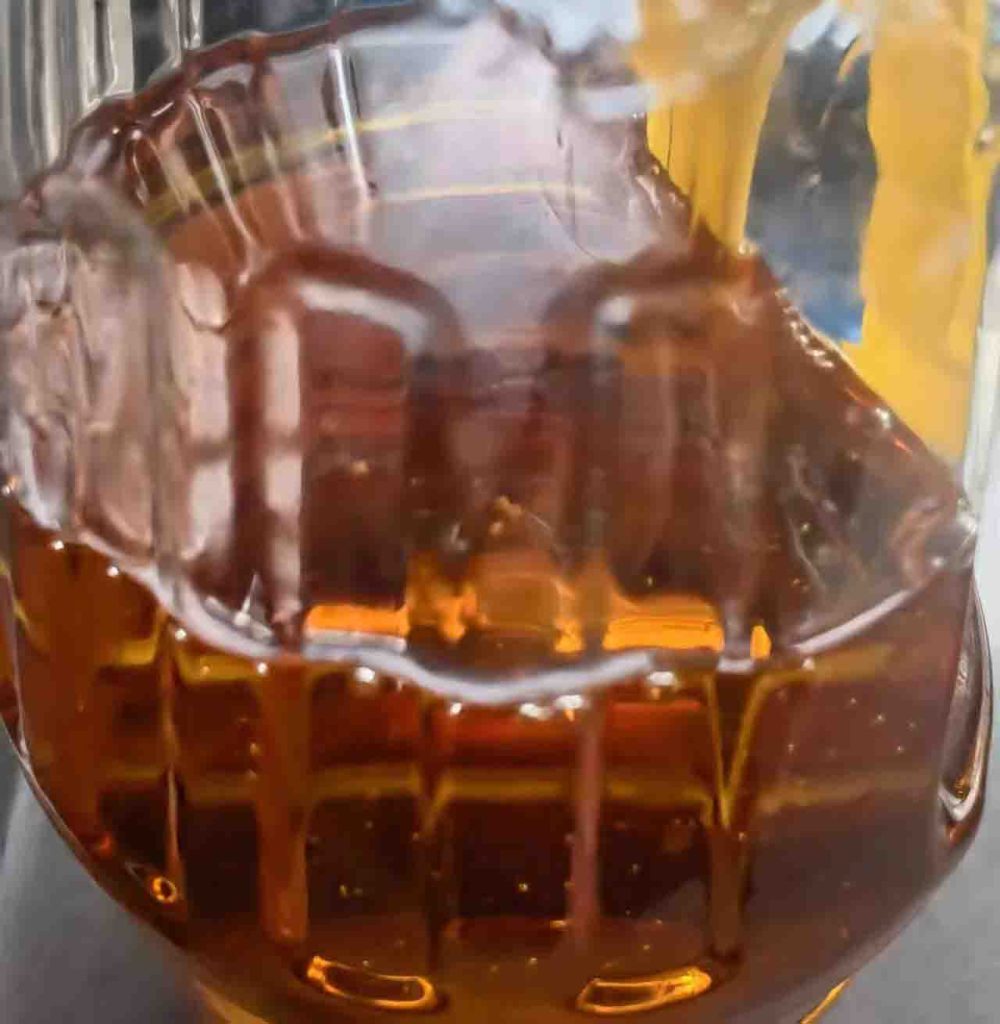Coalescent Agent
Film Forming/Coalescing Agents for Paints & Coatings
In manufacturing paints and coatings, the function of a coalescing agent is to facilitate the softening of the polymer. This softening process plays a vital role in the creation of a consistently solid and uninterrupted film during the drying phase of the paint. These agents operate as stabilizers or temporary plasticizers, contributing to the even dispersion of polymers or resins within the mixture. Specifically, coalescing agents, also referred to as film formers, find their application in dispersion paints, where they optimize the intricate process of forming a film from polymeric binder particles.
The inclusion of coalescent agents in paints serves the purpose of enabling the formation of a robust film, even under challenging environmental conditions such as low temperatures and high humidity. These agents hold an additional characteristic: they act as wetting agents, effectively reducing a coating’s Minimum Film Formation Temperature (MFFT). A subset of these agents, known as coalescing surfactants, is adept at this dual role. Notably, these agents, often esters, are meticulously engineered to aid paint and coatings manufacturers in achieving low levels of volatile organic compounds (VOCs), aligning with environmentally-conscious practices.
The central objective of a coalescent agent rests on ensuring the uniform and optimal formation of a film, a crucial factor influencing the desired mechanical properties of the final product. The application of coalescent proves particularly valuable in latex paints, a type commonly used in the industry, leading to an enhancement in overall paint performance. The underlying mechanism behind coalescence involves the softening of the latex, which in turn facilitates the establishment of a well-structured film.
Coalescent Agent
What are Ester Alcohols?
Ester alcohols, also known as esterified alcohols, This is an organic compound that has both an ester and an alcohol in its chemical structure. Its application fields are very wide, because it has a unique performance that is very advantageous in terms of volatility, aroma, solubility, compatibility, and viscosity.
In industrial production processes, it is used in the production of lubricants and the synthesis of polymers. It is also used as an emulsifier in the food industry, which can greatly improve the taste of food. In the pharmaceutical industry, it is used as a solubilizer. Then in some personal care products and fragrances, it can provide a better smell.
Properties of Coalescing Agents
One standout attribute of coalescent agents lies in their exceptional hydrolysis stability. This stability factor sets the stage for their utilization across a diverse spectrum of emulsions, including pure acrylic emulsions characterized by elevated pH levels. This versatility underscores their adaptability and robustness in the face of varying chemical environments, thus establishing them as dependable additives in a wide array of formulation scenarios.
In latex paints manufacturing, coalescent agents seamlessly assimilate with latex particles. This integration serves as a catalyst, imbuing the particles with enhanced softness. This softening effect is pivotal, as it fosters superior fusion within the paint composition. The outcome is a more harmonious and cohesive paint texture, culminating in an improved overall finish. Coalescent agents’ effortless integration into latex paints garners attention, with minimal disruption to the stability of the coating—even at higher content levels. This attribute streamlines the formulation process and affirms their compatibility with the existing composition, substantiating their role as facilitators of efficient and streamlined production.
A significant boon attributed to coalescent agents is their positive influence on paint rheology and pigment wettability. By contributing to improved rheological behavior, these agents ensure smoother application and a more controlled coating texture. Moreover, their ability to enhance pigment wettability equates to a more even and consistent dispersion of color, resulting in a more visually pleasing and uniform finish.
Coalescent agents also contribute to bolstering film hardness, fortifying the coating against the pitfalls of cracking. This enhanced hardness stands as a testament to the structural reinforcement facilitated by coalescent agents, underscoring their role in nurturing coatings capable of enduring various environmental stresses. By enhancing the durability of the paint surface, coalescent agents empower coatings to withstand the rigors of routine cleaning, preserving the aesthetic appeal of the painted surface over extended periods.
Coalescent Agent
Role of Coalescing Agents
Coalescent agents act as temporary plasticizers, imparting a degree of flexibility to polymer particles within the paint mixture. This plasticization effect leads to a vital reduction in the Minimum Film Formation Temperature (MFFT), effectively lowering the glass transition temperature (Tg) of the polymer. By doing so, these agents create conditions conducive to the merging of individual polymer particles, a process known as coalescence. This merging leads to the formation of a continuous and uniform film as the solvent within the paint evaporates.
The influence of coalescent agents extends beyond the polymer particles themselves. These agents bring about a reduction in the surface area of the polymer particles, promoting cohesion and bonding between neighboring particles. Additionally, the controlled evaporation of water facilitated by these agents serves to increase capillary forces, further contributing to the coalescence process. This orchestrated reduction in repulsive forces between polymer particles translates into a smoother and more seamless film formation, resulting in a visually appealing and structurally robust coating.
The role of coalescent agents in managing the complex interplay of forces and interactions during film formation is nothing short of instrumental. By functioning as a bridge between the technical characteristics of the polymer particles and the desired properties of the final coating, these agents play a pivotal role in ensuring the successful execution of paint and coating projects.
Film-forming additive, it has excellent adhesion ability, it can be matched and compatible with most raw materials, its molecular structure can form a strong link, in a short time, it is a film-forming aid Can form relatively strong adhesion.
Film-forming additives are compatible with most additives.
Types of Coalescing Agents
There are few different types of coalescent agents available in the market. Types differ from formulation and application, from hydrolysis stability to film hardness. These are main types of coalescent agents manufacturer may choose from:
Hydrophobic Coalescing Agents
Hydrophobic coalescent agents are characterized by their aversion to water, offer both advantages and challenges that influence their role in enhancing film formation and stability. Hydrophobic coalescent agents is their propensity to concentrate within the dispersed polymeric particles present in paint formulations. This concentration phenomenon stems from the agents’ inherent tendency to interact more favorably with the hydrophobic regions of the particles. These coalescent agents are commonly used in latex paint and coating manufacturing.
Hydrophilic Coalescing Agents: Water Soluble
The water-soluble hydrophilic coalescing agents draw attention for their remarkable affinity towards water. This property is integral to their role in paint formulations, as these agents exhibit the ability to seamlessly dissolve in water-based environments. This dissolution process paves the way for enhanced coalescing action, where the agents facilitate the merging of individual polymer particles during the drying phase. The outcome is a more uniform and cohesive film formation, contributing to a visually appealing and structurally sound paint finish.
Partially Water-Soluble Coalescing Agents
Coalescent agents strike a balance between water solubility and reduced propensity to dissolve excessively in water. This delicate equilibrium is of paramount importance, as it minimizes the risk of agent penetration into porous substrates, a concern that has implications for both the longevity and aesthetic integrity of the painted surface. The controlled water solubility mitigates the potential for unintended interactions with porous substrates, preventing issues such as surface penetration and subsequent color distortion.
Formulating the Functions of the Coalescing Agents
A distinctive attribute of this coalescent agent like alcohol ester C-12 lies in its classification, or rather, its non-classification as a VOC (volatile organic compound). This notable status is in accordance with regulatory standards such as the European Union Decopaint Directive 2004/42/EC, the European Union Solvent Emissions Directive, and the China State Environmental Protection Agency. This non-VOC designation not only aligns with stringent environmental regulations but also underscores the agent’s commitment to minimizing its impact on air quality.
Alcohol ester C-12 coalescent agent boasts qualities of low toxicity and biodegradability. This combination reflects a holistic approach to formulation, where the agent’s impact is evaluated not only during application but also throughout its lifecycle. By embodying attributes that contribute to a reduced ecological footprint, this coalescent agent resonates with the growing emphasis on sustainable and eco-friendly practices within the paint industry.
This coalescent agent alcohol ester C-12 reigns as a favored choice for latex paints and other waterborne coatings as a film-forming agent. Its role in facilitating the cohesion of latex particles during the drying process is pivotal in achieving the desired film integrity. The coalescence process, orchestrated by this agent, ensures the creation of a uniform and continuous film that enhances the paint’s aesthetic appeal and durability.
Coalescing Agents for Latex and Waterborne Coatings
Among the array of options, alcohol ester C-12 emerges as a venerable and extensively tested coalescent agent, underscoring its reliability and contribution within the framework of paint and coatings technology. Alcohol ester C-12 from Tripletchem exemplifies a proven track record, having been subjected to rigorous testing and validation. Its status as a tried-and-true coalescent agent underscores its trustworthiness in delivering consistent and impactful results across diverse applications.
Characteristics of alcohol ester C-12 lies in its composition as a typical ester alcohol. This chemical makeup finds versatile application as an additive in an array of formulations, ranging from paints to parquet sealants and even inkjet inks. However, its most notable role unfolds within the realm of emulsion paints, specifically water-based latex paints. These formulations benefit from the agent’s unique attributes, which culminate in enhanced coalescence and film formation.
The appearance of alcohol ester C-12 in its colorless form is a testament to its purity and its potential for seamless integration into various formulations. With an acid value of ≤0.5 mgKOH/g, the coalescent agent maintains a controlled level of acidity, contributing to formulation stability and compatibility. Its remarkably low water content of ≤0.1% (w/w) reflects an emphasis on minimizing any potential adverse effects stemming from water-related interactions.


